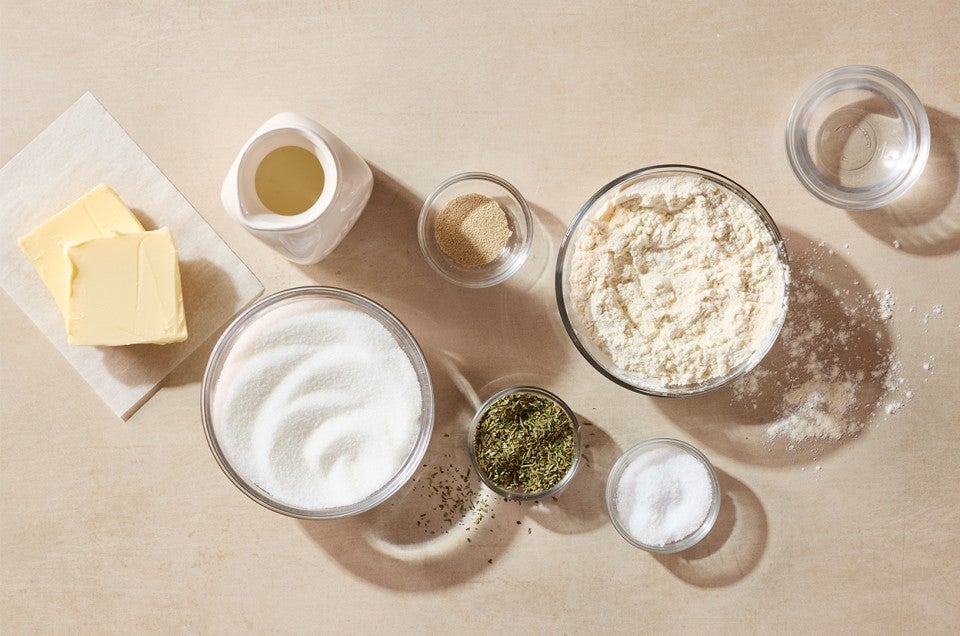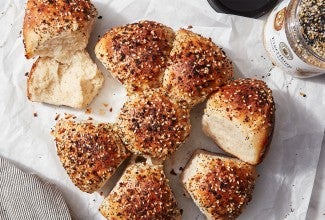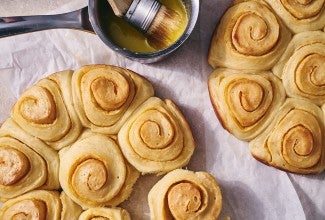-
Weigh your flour; or measure it by gently spooning it into a cup, then sweeping off any excess.
-
To make the slurry: In a medium bowl, place the flour. Measure the water in a microwave-safe measuring cup and microwave until just shy of boiling (at least 180°F), 1 to 2 minutes.
-
Pour 1/3 cup (76g) of the hot water over the flour (discard the remaining hot water), then whisk vigorously to eliminate as many lumps as possible. The mixture should immediately thicken into a roux-like paste. (If it does not, the water was not hot enough. Either start over or transfer the mixture to a small saucepan and heat, whisking constantly, until thickened to a paste-like consistency.)
-
To make the dough: To the bowl with the slurry, add the milk, sugar, yeast, and salt; whisk to combine. Starting with a rubber spatula, then switching to a hand or bowl scraper, work in the butter and flour until no dry bits remain; the dough will be rough. Transfer the dough to a lightly floured work surface and knead, sprinkling with additional flour as necessary, until smooth and springy, 1 to 2 minutes. Return the dough to the bowl, cover, and let it rise until doubled in size, 60 to 75 minutes.
-
To shape the rolls: In a small bowl, stir together the melted butter, seasoning, and salt. Generously brush an 8 1/2" x 4 1/2" loaf pan with some of the melted butter mixture. Place the butter mixture somewhere warm so it stays liquid; you'll need it for brushing the dough and the baked rolls.
-
Transfer the dough to a lightly floured work surface and roll it into a 12" x 5" rectangle with the long side facing you. Brush the bottom half with butter mixture. Cut the dough crosswise into six 2" x 5" rectangles. Working with one rectangle at a time, fold the unbuttered half over; instead of aligning the edges perfectly, allow for a 1/4" overhang. Place the roll in one corner of the pan with its rounded/closed side up against one of the short ends of the pan. Shape another roll and place it next to the first, with its rounded/closed side up against the short end of the pan. Repeat with the 4 remaining rectangles, shingling the rolls to form 3 rows of 2 rolls each.
-
Cover the pan and let the rolls rise until puffy, 30 to 45 minutes. Towards the end of the rise, preheat the oven to 375°F with a rack in the center.
-
Generously brush the risen rolls with more of the butter mixture.
-
Bake for 20 to 24 minutes, until golden brown and set. Let the rolls cool in the pan for about 5 minutes before turning them out onto a rack. Brush the rolls with the remaining butter mixture, then let them cool until warm or room temperature before serving.
-
Storage information: Small-Batch Parker House Rolls are best consumed the day they’re baked. Store airtight at room temperature for 1 day; reheat rolls in a foil packet in a 350°F oven until warmed through.





















